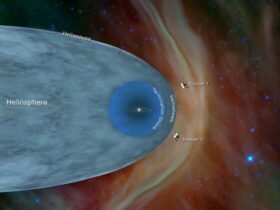Researchers originally documented a 1.15-mile-wide crater in a northeast China mountain range in 2019; later last year, a NASA satellite observed the crater from orbit, providing a fresh perspective on the impact’s effects.
Yilan County in Heilongjiang Province is home to the basin. It is the second verified impact structure in China, as per the experts that characterized it in 2019. Locals have long been aware of the location, which they refer to as “Quanshan,” or “circular mountain ridge,” stated in a NASA Earth Observatory press release.
Because the southern lip of the crater has crumbled, the impact site appears more crescent-shaped from above. According to the experts, the rim is about 500 feet in height at its tallest points and is somewhat broader than China’s previously known impact structure, Xiuyan, which measures 1.12 miles wide.
A second team of experts estimated last year that the crater developed between 46,000 – 53,000 years ago, leaving it the world’s biggest crater in less than 100,000 years. Scientists determined that an asteroid caused the crater by drilling almost 1,500 feet into its core, where they discovered molten stone, shocked quartz, including glass in the old sediments—proof of a high-temperature explosion. Although the scale of the asteroid that created the crater is unknown, it was unlikely to be nearly as enormous as the massive depression it left.
The devastating impact of the Yilan asteroid happened during the Late Pleistocene (between 126,000 and 11,700 years prior), and it should have been observed by current people and our ancestors in the area.
Interestingly, the Dragon Man fossils reported last year were discovered in Harbin, Heilongjiang Province, China. The asteroid that formed Yalin crater is 3 times older than that fossil; presumably, Dragon Man’s ancestors observed the impact, which happened 135 miles from where the specimen was preserved.













Leave a Reply